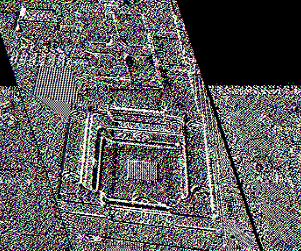What data recovery tools to buy if you want to start a data recovery business?
Free video data recovery training on how to recover lost data from different hard drives?
Where to buy head and platter replacement tools at good prices?
Data recover case studies step by step guide
I want to attend professional data recovery training courses
How to prepare a chip for further processing: Pins of a TSOP chip can be cleaned with solder wick and flux remover. Make sure that the pins are nicely aligned and no old solder is left behind on the pins. If a micro BGA chip is removed from a PCB the balls on the chip are damaged. Some solder is left behind on the chip and the rest is left behind on the PCB. The result is that the balls have different sizes. These differences in size are a problem for most sockets. These sockets are designed for virgin chips with balls of equal size resulting in bad connections when an unprepared micro BGA chip is used.
One solution for this problem is to repair the balls of the chip. This process is called reballing. Although other methods are available the best method is to use a reballing machine. This machine puts little balls of solder on the connection and locally melts it with a laser beam, but this machine is very expensive. A solution to omit reballing is to use a socket with little springs also called pogo pins. The chip is pressed onto the springs and the springs correct the difference in height of the balls. A solution with a socket with pogo pins is preferable because this saves a reballing step and the risk of losing data is minimized. After cleaning, the flash memory chip can be read with a programmer or reader. This memory chip programmer or reader usually has several types of ZIF sockets for connecting a memory chip to the programmer or reader. Flash chips in TSOP casing usually use a casing with 48pins. Therefore most TSOP chips can be read with only one type of socket. Micro BGA chips, however, are found in many different sizes and differ greatly in number of balls. Usually chips have casings between 40 balls up to 167 or more. The number of sockets to be used is huge (>40) and continues to grow. Usually a socket is expensive and has a long delivery time. Therefore it is not feasible to buy a new socket for each type of chip. A solution for this problem is to use a socket that can be adapted for many types of chip casings . The solution presented in this paper uses a matrix of 15 x 15 pogo pins where sockets are available for 0.5mm, 0.75mm and 0.8mm pitch. The flash memory chip is held into position by a locator. This locatoris specific for each type of casing and can be made relatively fast and easily with a milling machine and is cheap. See figure 12.

Fig. 12. Universal socket (left) and locator with chip (right)
How to remove TSOP chips and micro BGA chips
Data recovery Salon welcomes your comments and share with us your ideas, suggestions and experience. Data recovery salon is dedicated in sharing the most useful data recovery information with our users and only if you are good at data recovery or related knowledge, please kindly drop us an email and we will publish your article here. We need to make data recovery Salon to be the most professional and free data recovery E-book online.







Comments are closed
Sorry, but you cannot leave a comment for this post.